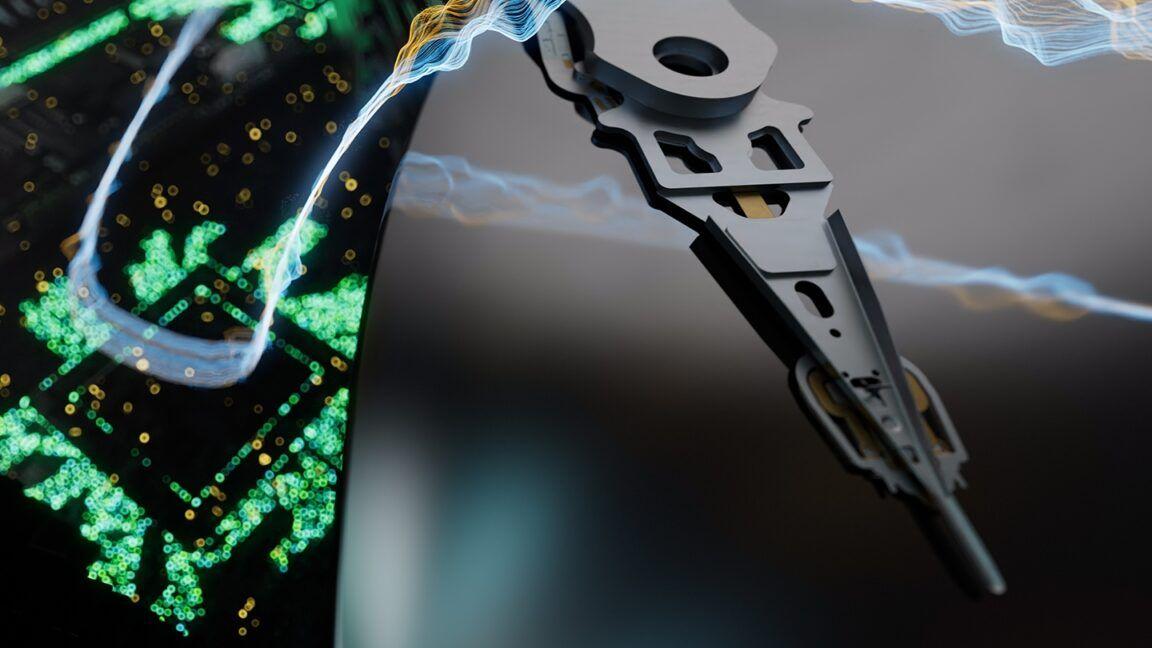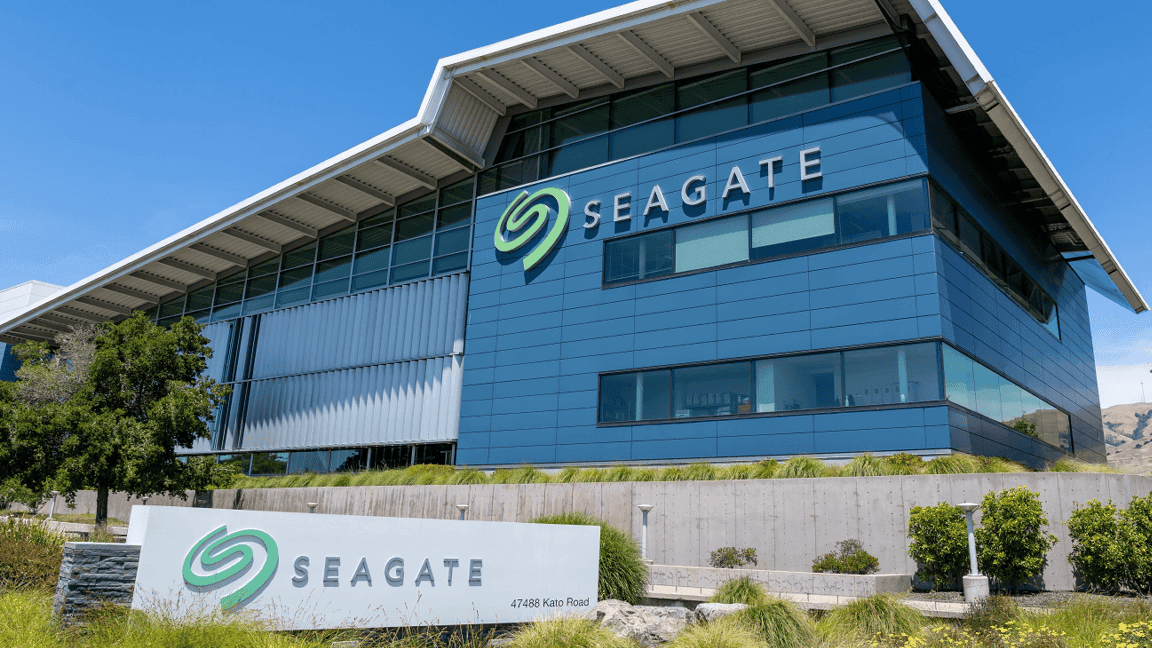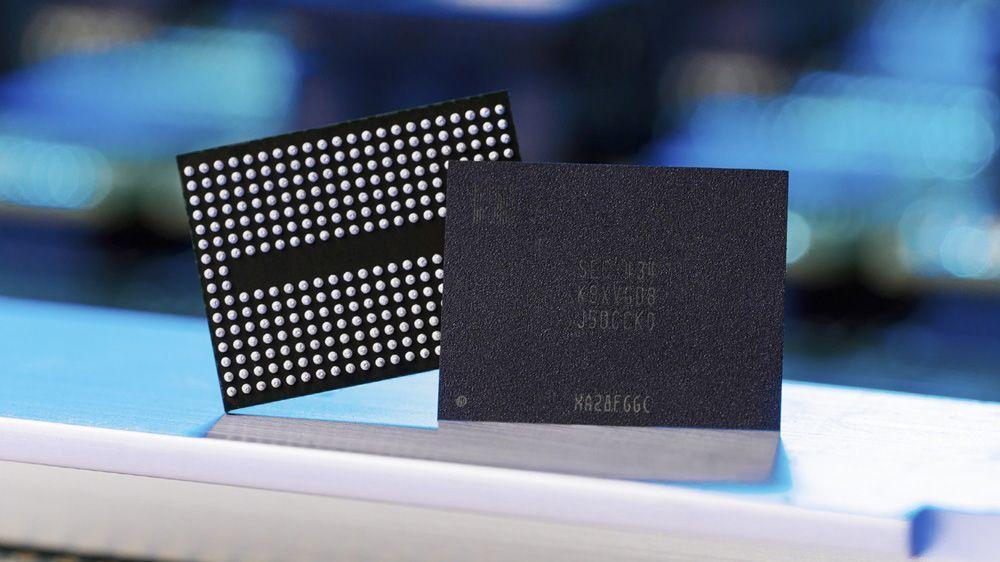Seagate Aims for 100TB Hard Drives by 2030, Driven by AI Storage Demands
4 Sources
4 Sources
[1]
Seagate on track for 100TB HDDs by 2030 -- claims current top drive will triple in capacity in 5 years
Seagate's existing HAMR roadmap slightly mismatches the new 100TB claims Seagate will bring a 100-terabyte HDD to market by 2030, according to comments from its CCO. In an interview with CNBC, Chief Commercial Officer BS Teh shared Seagate's new 100 TB goal, citing demand from the AI and HPC markets driving the great leap in capacity. "This is a key enabler for the industry to be able to deliver the storage capacity that the market needs," shared Teh when asked about the demand for 100TB units. "There's no other technology that's able to produce this capacity of storage technology to meet the growth that the market needs." Seagate's current largest hard drive by capacity is the Exos Mozaic 3+, a 36TB drive released this year and available only to select customers. The Moziac line uses HAMR (heat-assisted magnetic recording) technology, briefly heating recording regions and reducing the intensity required to write data to discs, greatly improving storage density. The Mozaic contains ten glass data platters, which Seagate has produced in capacities of up to 6TB each, making Seagate's current theoretical size limit 60TB. But the current corporate roadmap does not stretch this far, with Seagate in January saying it expects its next platform, Mozaic 4+, to bring 40TB+ HDDs in 2026, and the following Mozaic 5+ platform to bring 50TB drives in 2028 or later. This falls well short of Seagate's 2017 roadmap, which aimed for 50TB hard drives by 2026. As a result, it could be wise to take claims of 100TB by 2030 with a grain of salt, unless Seagate has plans beyond HAMR after Mozaic 5+. Seagate will also have energy conservation interests breathing down its neck in its race to boost capacity. As the AI market continues to demand an ever greater share of the energy grid, energy efficiency will likely be a more serious concern than consolidating capacity for enterprise users. Teh claims that Seagate's race to 100TB is keeping conservation on the mind. "With the product itself, we design it to have lower power per terabyte, or to have higher density of the device itself, such that when you actually integrate that product into your data center, you require less space, less power, less everything, because you're using your fewer drives to fulfill that capacity." He also claims that Seagate is pushing renewable energy sources to power its production lines. Whether the fires of AI and enterprise needs are enough to push Seagate through the goalposts by 2030 is yet to be seen. While the firm consistently releases the market's largest capacity drives, its history of falling short of over-enthusiastic stretch goals casts some doubt on the bullish claims of its C-suite.
[2]
Tech giant Seagate sees hard drive capacity tripling by 2030 on booming AI demand
Seagate Technology's headquarters in Scotts Valley, California. Data storage firm Seagate is working to develop a 100-terabyte hard drive by 2030, touting blistering demand from data centers for the 70-year-old technology in the artificial intelligence boom. BS Teh, Seagate's chief commercial officer, told CNBC that the company is aiming to launch such a drive -- which would have about three times the capacity of the firm's top-of-the-line hard drives -- by 2030. The largest hard disk drive Seagate currently produces is the 36-terabyte Exos M model, which it launched in January. "You may be thinking, 'Who would need it?'" Teh said, referring to the idea of a 100-terabyte hard drive. "Well, plenty." "I think there's definitely strong demand," he added. "This is a key enabler for the industry to be able to deliver the storage capacity that the market needs, because there's no other technology that's able to produce this capacity of storage technology to meet the growth that the market needs." Seagate has been touting itself as more of an AI player in recent years amid the rise of foundational models like those being developed by OpenAI, Microsoft and Google. In the computer hardware market, the AI boom has largely benefited players like Nvidia which make the graphics processing units needed for training and running AI models.
[3]
Seagate targets 100TB hard drives by 2030 to meet AI storage demands
Holy TB: Training and managing complex AI models requires not only significant computing power but also vast fleets of capable storage devices. Seagate plans to build a new AI-focused business around this need, developing new disk drives with unprecedented storage capacities in the not-so-distant future. Seagate expects to launch a 100-terabyte hard disk drive by 2030, anticipating that AI companies will require such massive storage for their increasingly complex chatbots and generative AI services. According to B.S. Teh, who oversees Seagate's global commercial strategy development and operations, there will soon be considerable demand for extremely large drives based on proven magnetic storage technology. Currently, Seagate's largest hard drive is the 36TB Exos M model, introduced earlier this year. The company has recently invested heavily in advancing HDD-based solutions to keep increasing storage capacity. Seagate is a major proponent of heat-assisted magnetic recording (HAMR), a technology that boosts data density by using a laser diode attached to each recording head to increase the number of bits stored on a magnetic surface. Seagate is also pursuing additional breakthroughs, including NVMe-based HDDs aimed at significantly improving the reliability and sustainability of storage systems in enterprise and data center environments. Like Nvidia and many other tech companies today, Seagate now brands itself as an "AI company," signaling where it believes the money is - or will be - in the coming years. "A key element to enjoying surging revenues in the AI industry is providing the storage capacity AI companies need," Teh stated in a recent interview. "Nothing matches hard disk drives in meeting this growing demand." The 70-year-old HDD technology remains well-suited for the anticipated boom in AI data centers, even as analysts and NGOs raise concerns about the environmental and energy impacts of this trend. The International Energy Agency estimates that a single ChatGPT query consumes up to 2.9 watt-hours of power, while a simple Google search is nearly 10 times more efficient. Seagate is addressing environmental concerns by focusing on factors it can influence through its business and manufacturing practices. Newer hard disk drives are designed to either lower power consumption per terabyte or increase data density. As customers integrate these drives into their data centers, Teh suggested they will benefit from reduced space, energy, and resource requirements. Additionally, Seagate is working to reduce the environmental footprint of its manufacturing plants by incorporating renewable energy sources.
[4]
Seagate Bets On Mega-Sized, Sustainable Drives As AI Sparks Record Data Demand - Seagate Tech Hldgs (NASDAQ:STX)
Seagate Technology Holdings STX is amid efforts to develop a 100-terabyte hard drive by 2030. Seagate's chief commercial officer, BS Teh, told CNBC on Wednesday that the data storage firm aims to launch a drive with about three times the capacity of its top-notch hard drives by 2030. The largest hard disk drive Seagate currently produces is the 36-terabyte Exos M model. Also Read: Western Digital Refocuses Post-SanDisk Spin-Off As Analyst Highlights AI-Led HDD Growth Teh expressed conviction in strong demand, underlining the need for the 100-terabyte hard drive. Teh also said Seagate is amid efforts to counter climate concerns surrounding AI's energy demands. Teh expressed conviction in hard disk drive prospects, citing it as a much more sustainable device technology. Big Tech's 2025 AI infrastructure investments included Amazon.com Inc.'s AMZN $100 billion, followed by Microsoft Corp MSFT and Alphabet Inc GOOG GOOGL at $80 billion each, and Meta committing over $60 billion. Microsoft expects to spend $80 billion on data centers in fiscal 2025. February reports indicated Meta Platforms, Inc. META is in talks to build an AI data center campus that could exceed $200 billion in costs. Seagate Technology Holdings stock gained close to 9% year-to-date. It reported third-quarter sales of $2.16 billion (versus $1.66 billion Y/Y), missing the analyst estimate of $2.31 billion. It reported adjusted earnings per share of $1.90, missing the analyst estimate of $2.09. Seagate expects fourth-quarter revenue of $2.25 billion-$2.55 billion, versus the $2.43 billion estimate, and adjusted earnings of $2.20-$2.60 per share, versus the $2.20 analyst estimate. Price Action: STX stock is up 1.16% at $94.99 at the last check on Wednesday. Read Next: ON Semiconductor Powers Through Expectations, But Analysts Dial Down Targets On Margin Squeeze Photo via Shutterstock STXSeagate Technology Holdings PLC$95.081.26%Stock Score Locked: Want to See it? Benzinga Rankings give you vital metrics on any stock - anytime. Reveal Full ScoreEdge RankingsMomentum54.35Growth88.43Quality-Value28.16Price TrendShortMediumLongOverviewAMZNAmazon.com Inc$188.011.62%GOOGAlphabet Inc$151.19-8.48%GOOGLAlphabet Inc$149.36-8.50%METAMeta Platforms Inc$594.821.28%MSFTMicrosoft Corp$434.190.20%Market News and Data brought to you by Benzinga APIs
Share
Share
Copy Link
Seagate Technology plans to develop 100-terabyte hard drives by 2030, tripling current capacities to meet growing AI and data center storage needs. The company emphasizes sustainability and energy efficiency in its development process.

Seagate's Ambitious Storage Goals
Seagate Technology, a leading data storage firm, has set its sights on developing a 100-terabyte hard disk drive (HDD) by 2030. This ambitious goal was revealed by BS Teh, Seagate's Chief Commercial Officer, in a recent interview with CNBC
2
. The proposed drive would have approximately three times the capacity of Seagate's current top-of-the-line models, representing a significant leap in storage technology1
.Driving Forces Behind the Innovation
The primary catalyst for this technological push is the burgeoning demand from artificial intelligence (AI) and high-performance computing (HPC) markets. As AI models become increasingly complex and data-intensive, the need for massive storage solutions has grown exponentially
3
. Seagate sees this as a crucial opportunity to position itself as a key player in the AI infrastructure landscape.Current Technology and Roadmap
Seagate's largest commercially available drive is the 36TB Exos Mozaic 3+, which utilizes Heat-Assisted Magnetic Recording (HAMR) technology
1
. HAMR allows for greater storage density by briefly heating recording regions, thus reducing the intensity required to write data to discs1
.However, Seagate's current roadmap falls short of the 100TB goal:
- Mozaic 4+: Expected to bring 40TB+ HDDs by 2026
- Mozaic 5+: Aiming for 50TB drives by 2028 or later
1
This discrepancy has led some industry observers to approach the 100TB claim with skepticism, especially given Seagate's history of not meeting overly optimistic projections
1
.Sustainability and Energy Efficiency
As AI and data centers consume an increasing share of global energy resources, Seagate is prioritizing energy efficiency in its development process. The company claims that its newer drives are designed to lower power consumption per terabyte and increase data density
3
.BS Teh emphasized the sustainability aspect, stating, "With the product itself, we design it to have lower power per terabyte, or to have higher density of the device itself, such that when you actually integrate that product into your data center, you require less space, less power, less everything"
1
.Related Stories
Market Demand and Competition
The demand for high-capacity storage solutions is driven by major tech companies investing heavily in AI infrastructure. For instance:
- Amazon plans to invest $100 billion
- Microsoft and Alphabet are each committing $80 billion
- Meta is in talks to build an AI data center campus that could exceed $200 billion in costs
4
These investments underscore the critical role that storage technology will play in the future of AI and cloud computing.
Challenges and Uncertainties
While Seagate's goals are ambitious, there are several challenges to overcome:
- Technological hurdles in achieving such high storage densities
- Competition from solid-state drives (SSDs) and other storage technologies
- Ensuring reliability and performance at these unprecedented capacities
- Meeting energy efficiency targets to address environmental concerns
3
As the race for larger storage capacities continues, Seagate's ability to deliver on its promises will be closely watched by industry observers and potential customers alike.
References
Summarized by
Navi
[1]
Related Stories
Seagate Launches Massive 30TB HAMR Hard Drives, Targeting AI Storage Demands
15 Jul 2025•Technology

Seagate Unveils 36TB Hard Drives with HAMR Technology, Targeting AI and Cloud Storage Demands
21 Jan 2025•Technology

Seagate Warns of AI-Driven Carbon Crisis in Data Storage Industry
24 May 2025•Technology

Recent Highlights
1
Google launches Gemini 3 Flash as default AI model, delivering speed with Pro-grade reasoning
Technology

2
OpenAI launches GPT Image 1.5 as AI image generator war with Google intensifies
Technology

3
OpenAI launches ChatGPT app store, opening doors for third-party developers to build AI-powered apps
Technology





